In recent years, Tai Chi is gaining a lot of traction in the West due to its health benefits. It’s what’s called “internal” martial art because it focuses on the spiritual aspect that benefits mental health and overall wellbeing.
The best part about Tai chi is that you can learn it at home on your own. There are 5 main styles of Tai chi that differ slightly but follow the same cornerstone concepts. At first, you have to learn 10 basic principles of Tai chi, then pick which style you want to learn, and start learning it by reading books and watching YouTube videos.
In this article, we will cover everything you need to know about self-learning Tai chi.
We will start by explaining what it is and its history, then move to 3 main aspects that make up Tai chi and 10 basic principles you have to follow when training Tai chi.
Finally, we will recommend the best books and YouTube channels that will help you learn Tai chi on your own.
What Is Tai Chi?
Before you can start learning Tai chi on your own, let’s have a brief history lesson about its origin, and get to know some of the most important concepts you’ll encounter in your Tai chi journey.
Tai chi has many names, among which are Tàijí, T’ai chi ch’üan, and Tàijíquán, and it roughly translates to “supreme ultimate fist”.
It primarily concerns flow movements without striking or other types of physical contact, so it’s great for people with limited mobility, like seniors.
While other martial arts, like MMA or boxing, require sparring that requires a partner and is hard on your body, Tai chi can be practiced on your own.
There are many legends about who invented the earliest form of Tai chi.
For example, Zhang Sanfeng was a 13th-century Taoist monk, who combined physical exercises of Shaolin martial arts with Taoist meditation practices that resulted in Tai chi.
However, he supposedly lived for over 200 years, and it’s not uncommon for Chinese martial arts to mistify their creators. The first person with credible historical records who is credited with Tai chi development is Cheng Wangting.
He was a 16th century Ming dynasty commander, who upon retiring went to live in a village that today is called Cheng village.
There, he drew inspiration from Shaolin martial arts, Taoism, Confucianism, and Traditional Chinese Medicine to create the original style of Tai chi called Chen family-style or Chen-style Taijiquan.
Knowing this, we can take a look at the main aspects and principles of Tai chi practice that you must understand before you start training on your own.
-> Read Also What Is An Autodidact?
Tai Chi Practice Aspects and Principles
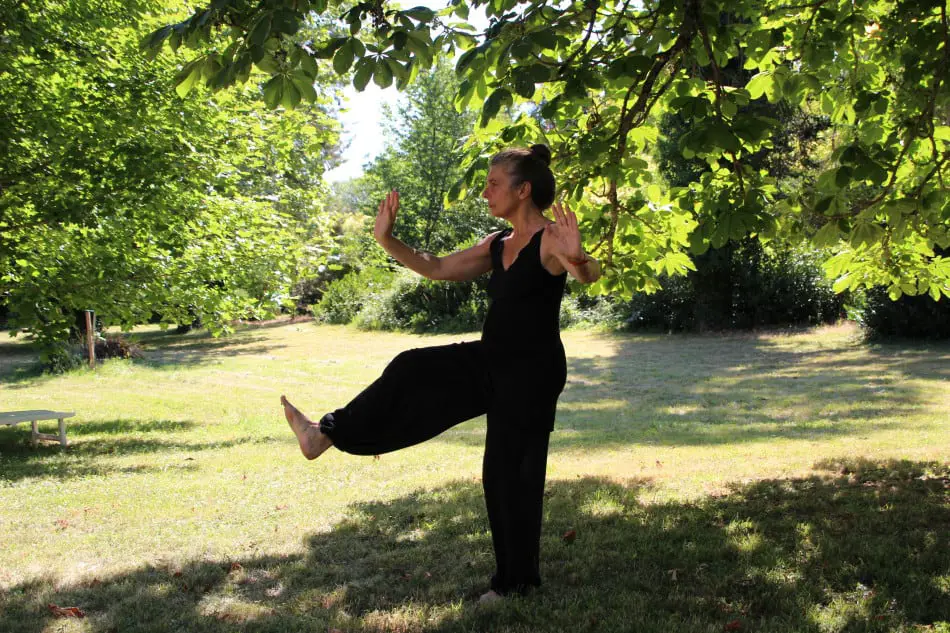
The first thing you have to do if you want to self-learn Tai chi is to understand what constitutes its individual elements.
There are 3 main aspects that make up Tai chi practice, regardless of the particular style:
Movement
This is the physical aspect of Tai chi practice, which consists of postures, routines, and striking techniques.
For example, tào lù, means “routine”, and includes hundreds of different sets of moves that focus on smooth movements with control of your breath.
These forms can be used both defensively and offensively, but they’re primarily utilized to strengthen the body and improve breath control.
You can look at Tai chi postures and routines as exercises, like a bench press at the gym.
Tai chi also includes other types of movements, like sǎnshǒu, which are striking techniques, and tuishou, consisting of routines that are called pushing hands, which involve deflecting enemy strikes and using their own force against themselves.
If you’re learning Tai chi on your own, you’re unlikely to practice sǎnshǒu and tuishou, and are going to focus on performing tào lù routines.
Meditation
Tai chi is an internal martial art, meaning you’re going to spend a lot of time improving your mental state. Two main systems that are practiced are neigong (lit. internal strength) and qigong (lit. life-energy cultivation),
Neigong has its origins in Taoism, and includes breathing and meditation exercises aiming to find the path (Tao) and appreciate the harmonious duality between the opposites (yīnyáng).
Qigong concerns the cultivation and control of the life force called qi, and includes controlled breathing, meditation, and routine practices.
Spirituality
Like most Eastern martial arts, Tai chi practice is grounded in the spiritual framework. As we’ve just seen, meditation practices are based on yīnyáng and qi, and the term Tai chi not only means martial art but also a spiritual concept of the Supreme Ultimate.
Think of it as genesis, as the primordial state of the universe before humans, even prior to good and evil.
As Tai chi originated from Taoist and Confucian philosophies, the practice of this martial art itself is based on Chinese spirituality.
If you’re just looking to get health benefits and improve your wellbeing, then the spirituality aspect of Tai chi practice can be ignored. However, nearly all styles of this martial art include spirituality in their teachings.
If you want to include it in your Tai chi practice, you can do so by studying texts of Chinese philosophers like Confucius and Laozi.
There are many Tai chi principles that are like rules or guidelines to keep in mind when practicing Tai chi.
The exact principles and their number isn’t set in stone and differs by style and school, but here are 10 general principles that you have to know before starting Tai chi practice:
Mindfulness
That’s one of the most important principles of Tai chi practice. You have to be mindful throughout the practice. Don’t allow random thoughts to pop up in your mind to control your attention.
Simply be aware that there are thoughts, but don’t pay them any attention and stay focused on what you’re doing at the moment.
Breathe
When practicing Tai chi, your breathing should be long, calm, and slow. If you’re out of breath or taking quick and short breaths, it’s an indicator of improper movement and the disruption of qi flow through your body.
Beautiful Lady’s Wrist
The wrist is called the first of the “nine gates”, through which qi flows. Beautiful Lady’s Wrist means keeping your wrist relaxed, but in a straight line from your elbow up until the end of your middle finger.
Stay Centered
In Tai chi, it’s believed that every person has dantian (lit. elixir field) or commonly called the “energy center”. It’s located below the navel, and that’s where your spirit is located.
It’s the center of qi, so when practicing Tai chi, always stay centered by focusing on your dantian, and rotate using hips or from the waist, instead of shoulders.
Upright Head
Hold your neck and head upright, but not strained or tensed up. Your jaw should be slightly tucked, but not too much like in striking martial arts.
Some teachers advise that you should imagine your head connected to a thread that’s hanging from above.

Straight Back
When you’re crouched, qi can’t flow naturally, and your movements become stiff and lack harmony. That’s why you should maintain your back straight when performing Tai chi routines.
Weight Distribution
When doing most Tai chi routines and postures, you’re going to shift your weight from one leg to another, but always stay balanced.
Your movements will be harmonious and smooth if you transfer the weight slowly and with confidence.
It’s because weight distribution is seen as a microcosmos of the balance between the opposing forces of yīnyáng in the universe.
Move Like Water
Your movement should be slowed but controlled as if you’d be moving through water. Jerky and uncertain movements result from tensed muscles and joints, which disrupt the flow of qi. Your qi has to flow harmoniously if you want to become healthy and happy.
Body Synchronization
For your movements to be smooth, your lower and upper body has to move in harmony. Qi starts rising from the feet up and flows through your hips and waist, which controls your movement into arms that express the routine or pose.
Soft Gaze
When practicing Tai chi, your eyes should be open, but relaxed and not focusing on any specific point in front of you. Simply take in everything as is, and be mindful of your surroundings.
Keep in mind that these 10 principles aren’t some commandments, and there are many more principles depending on the exact style of Tai chi.
However, all of the styles are following these 10, and you should try your best to practice in accordance with these principles.
That being said, now is the time to talk about the 5 main styles of Tai chi.
-> Learn More about Self-Learning vs. Classroom Learning: Which Is Better?
5 Styles of Tai Chi

Before you can learn Tai chi, we recommend choosing which style you want to learn.
While you can do just “Tai chi” as there are some general poses and routines, studying a specific style is more beneficial because it’s comprehensive and everything you learn builds upon previously learned things.
All Tai chi styles will benefit your health and overall wellbeing, but each style has unique characteristics, different sets of routines or moves, and emphasizes different things.
Keep in mind that because the styles were and are currently developed and improved, there are many different “sub-styles” that are based on the main styles.
That’s why we’re not going to list the number of movements or forms of each style.
That being said, here’s a crash course for the 5 main styles of Tai chi, showing their unique characteristics and who should consider choosing the style.
1. Chen Style – Created by Chen Wangting (1580–1660)
- The First Established Style – while Tai chi or Tai chi-like martial arts existed prior to Chen Wangting, he’s the official creator of it.
- “Silk Reeling” – unique wavy/spiraling movements of neigong (lit. internal strength)
- Combines Slow and Fast Moves – Chen style routines alternate between rapid and slower movements.
- The Best For Developing Strength
2. Yang Style – Created by Yang Luchan (1799-1872)
- The Most Popular Style Today
- Slow, Wide Sweeping Motions
- Easy on the Body – can practice even if you’re recovering from injury
- Great For Everybody – there’s a reason why it’s the most popular style
3. Wu Hao Style – Created by Wu Yuxiang (1812-1880)
- Combines Elements From Chen and Yang
- Emphasis on Qi – focuses on meditation and spiritual aspects
- The Least Popular – it’s difficult to find many practitioners even in China
- The Least Resources Online – makes it difficult to learn on your own
- The Best For Those Interested in Chinese Philosophy
4. Wu Style – Created by Wu Quanyou (1834-1902)
- The Second Most Popular
- Front-Leaning Poses – instead of staying centered, Wu style poses require leaning forward
- Targets Core and Back Muscles
- “Short” Routines – makes it good for those with a limited range of motion
- Was Practiced by the Imperial Guards
- The Best for Self-Defense
5. Sun Style – Sun Lutang (1861-1932)
- Graceful Hand Motions – arguably the most aesthetically pleasing routines
- Emphasis on Footwork – makes many people compare Sun style to a dance
- The Least Physically Demanding
- The Best for Seniors
Now that you know which Tai chi style you’d want to learn, we can recommend you the best books for self-learning.
Read Tai Chi Books

There are hundreds of great books on Tai chi. Some are aimed specifically at self-learners and beginners, others at more advanced practitioners.
We’re going to recommend the best book for each style, but never stop learning and keep reading as much as you can.
Finally, don’t think that you have to finish a book before you can start practicing Tai chi.
You should start practicing as soon as you learn about the routines and keep learning as you practice. That being out of the way, here are the best books we recommend:
1) The Five Levels of Taijiquan – For Chen Style

This book is a translation of the work by grandmaster Chen Xiaowang, who started practicing Tai chi at the age of 7. He’s regarded as one of the most influential masters that shaped Chen style into what it is today.
It guides you through 5 levels of Chen style Tai chi and shows you what you have to do exactly to increase your skill level.
The translation and commentary were written by Master Jan Silberstorff, one of the best Tai chi teachers in the West.
2) Tai Chi Chuan Classical Yang Style – For Yang Style
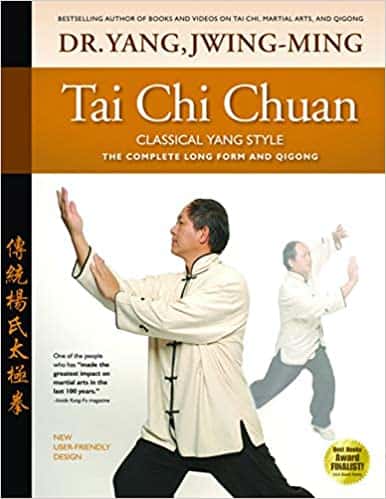
Written by Dr. Jwing-Ming Yang, who has decades of experience practicing, teaching, and researching Yang style of Tai chi. The magazine “Inside Kung Fu” named him as one of the 10 people that had the biggest impact on martial arts in the past 100 years.
This book offers over 400 pages of information and pictures that will give you everything you need to start practicing Yang style Tai chi.
3) Hao Style Tai Ji Quan – For Wu Hao Style
As we’ve mentioned, Wu Hao Tai chi is the least popular of the main 5 styles, thus resources are scarce. Fortunately, this 100-page book by Master Liu Jishun gives a solid foundation that can help you self-learning Tai chi.
Master Liu Jishun has been practicing Wu Hao style for over 40 years, was one of the judges at the All-China National Tai chi Championships in the 1980s, and is currently teaching in San Francisco Bay Area.
4) Wu Style Tai Chi Chuan: Ancient Chinese Way to Health – For Wu Style
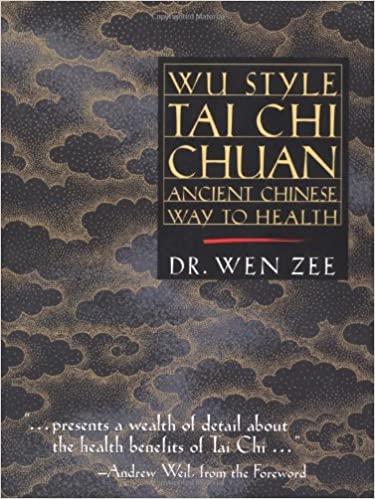
This book starts off with the history of Tai Chi, then proposes numerous health benefits of its practice, and finally gives a detailed step-by-step guide full of photographs for the successful solo practice of Wu Style Tai chi.
There’s also a chapter on the pushing hands techniques.
The book is written by Wen Zee, who’s a medical doctor and a master of Wu Style Tai chi.
5) Traditional Sun Style Tai-Chi: 1957 Instructional Handbook – For Sun Style
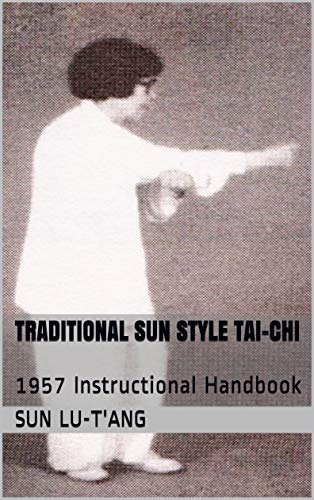
There’s no better way to self-learn Tai chi than reading a book written by its creator, right? That’s why for Sun style Tai chi, we recommend a book that was written by Madam Sun Jian-Yun, a daughter of Sun Lutang, who established the Sun style.
This book is Volume 1 of the series and covers 25 postures with the help of over 100 photographs and drawings.
-> Learn more about the 7 best websites for self-learning
Watch YouTube Videos
Now that you’re reading a book on your chosen style of Tai chi, we recommend supplementing your learning by watching YouTube videos on Tai chi poses, routines, and philosophy.
While books are often written about a particular style, YouTube videos are more casual and often take a general approach that’s fitting all styles of Tai chi.
Here’s a list of the best YouTube channels you should look into:
Master Wong
This is probably the biggest YouTube channel creating content that helps people self-learn Tai chi. It was created by Wing Chun, who’s a master of several martial arts, and his videos primarily concern self-defense and fighting techniques.
If you’d like to use Tai chi not only for bettering your physical, mental, and spiritual state, this channel will teach you everything you need to know about Tai chi combat.
Hai Yang
This channel is created by Hai Yang, who is a Chinese martial arts master teaching in Montreal.
His videos focus on the philosophical and spiritual aspects of Tai chi and are useful if you’re interested in learning more about Chinese culture and the inner aspect of Tai chi.
Ian Sinclair
If you’re not interested in learning a particular style of Tai chi, Ian Sinclair’s channel is a perfect self-learning resource.
He’s not a fan of Tai chi styles and took the best parts of every to create his own standardized approach to this martial art.
He has a 17-video playlist “Introduction to Tai chi” which is a comprehensive guide to the general practice of Tai chi.
Frequently Asked Questions
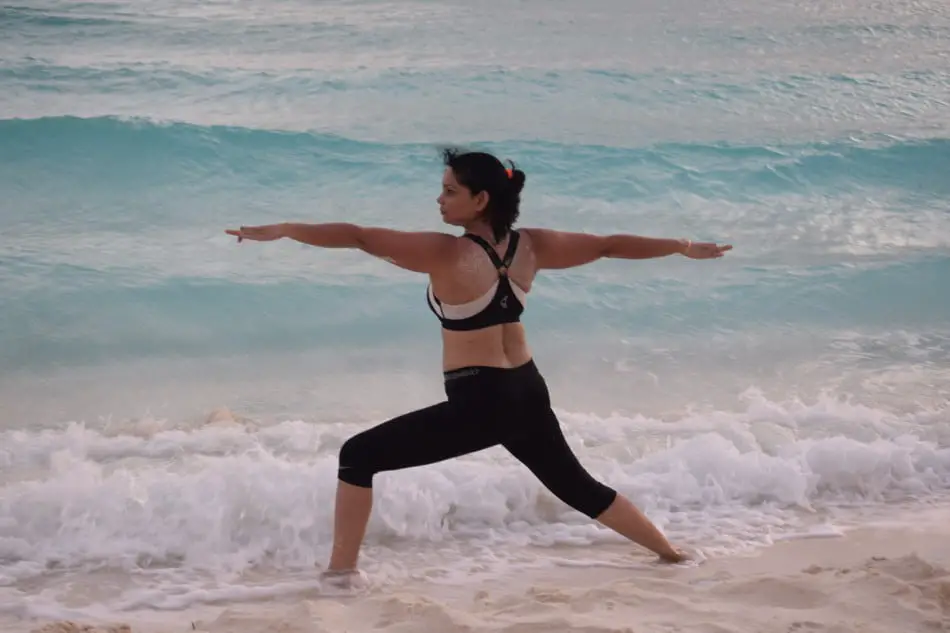
Q.1. How long does it take to learn Tai chi?
A. It depends on what you mean by “learn”. You cannot really learn martial arts, and even masters with decades of experience keep learning and honing their craft.
However, reaching a basic level of Tai chi will take you at least a year of daily practice.
Q.2. Can you learn Tai chi on your own?
A. You can definitely reach a basic level of Tai chi on your own by self-learning. Reading books, watching YouTube videos, and obviously, practicing Tai chi is more than enough to become an upper-beginner.
However, mastering Tai chi on your own is a difficult task, and if you want to achieve a high level of mastery, you should start looking into online or in-person classes.
Final Words
Self-learning Tai chi is a great way for everyone to improve their physical and mental health. Just by learning it you can greatly better your overall well-being.
The start of this journey is easy, you just have to understand the different aspects of Tai chi and the 10 general principles of its practice.
After that, you can look up a single pose online and start practicing it at home.







I’ve tired of the mental part of using drugs to deal with pain, anxiety and memory. I’m giving up all such medications and I have started Tai Chi and soon Yoga to replace them. I’ll let you know how things work out.